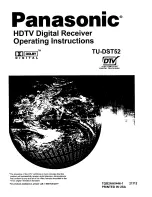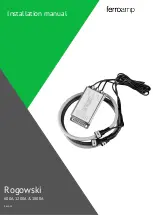
Carrier Stop
When jumper JU5 is in the NORM position,
carrier stop will initiate when jumper JU2
(pins A-16/C-16) is set at the appropriate
voltage level (15V, 48V, 125V, or 250V);
when JU5 is in the INVERT position, carrier
stop will initiate when voltage is removed.
Low-Level Test
When jumper JU4 is in the NORM position, a
Low-Level test will initiate when jumper JU3
(pins A-22/C-22) is set at the appropriate
voltage level (15V, 48V, 125V, or 250V);
when JU4 is in the INVERT position, a Low-
Level test will initiate when voltage is
removed.
When the appropriate jumper is in place on the
board, jumpers JU1, JU2, and JU3 provide logic
“1” or “0” inputs. (Proper polarity of these input
commands must be observed.)
You can manually initiate a Low-Level test by
pressing the (recessed) push button switch (S2) on
the front panel. You can manually initiate a High-
Level test by pressing the (recessed) push button
switch (S1).
You can initiate an optional High-Level
checkback key through pin C-8. You can initiate
an optional Low-Level checkback key through pin
C-28. A voice key can be initiated through pin
C-24.
Keying Module outputs are as follows:
High-Level (10W) Key
Pin A-8
Any Transmitter Key
Pin C-6
(1-W, 4.3W, or l0W)
Voice (4.3W) Key
Pin A-6
Front panel LEDs are illuminated as follows:
D10 High-Level
D11 Low-Level
D12 Voice
You can make the STOP command inhibit the
High-Level (10W) output by using jumper JU7.
The STOP command also inhibits the Voice Key
output. The Voice Key is inhibited by the High-
Level and Low-Level Keys.
Zener diodes (D1, D2, D3) limit the input voltage
to the optical isolators (I7, I8, I9), while also
providing reverse voltage protection. Zener diodes
(D14, D13) regulate primary power (pins
A-2/A-4, pins A-30/A-32, pins C-30/C-32) down
to 15V, while also providing reverse voltage
protection.
Transistor (Q1), JU8, R40, D15, D16, D17, and
R41 are used for special applications with KDAR
and SKBU type keying circuits. These particular
relay applications have a single line input for
carrier start. The line has a tri-state condition, i.e.,
it is active high, active low, or open circuit. For
example, as shown in Figure 2-13 in the
Applications chapter, under normal operating
conditions, the input to TB4-1 is an open circuit
(while looking back into Z1). CSB, CSP, and SQ
are open, and zener diode (Z1) is much larger than
20Vdc. When the carrier test switch is depressed,
or the phase and ground carrier start contacts
open, the line going to TB4-1 goes active high. If
the phase and ground carrier stop contacts close,
the line going to TB4-1 is active low.
As shown in the schematic of the keying load
(Figure 10-3) and Q1 circuitry, when A-10 is high
(same as TB4-1), carrier start is initiated and
carrier stop is inhibited. This is caused by R40 and
D15 saturating Q1 and shorting out the stop
voltage applied to D7. C-16 is connected to the
battery so that D2 ALWAYS has 20V across it.
When TB4-1 (A-10) goes active low, Diode D17
shorts out the drive voltage to Q1, and internal
diode I8 conducts, causing a STOP function to be
generated. The following TRUTH table illustrates
the operation:
October 2003
Page 10–3
Chapter 10. Keying Module
10
NOTE
Carrier start will initiate a High-Level test.
Summary of Contents for TC-10B
Page 2: ...Technologies Inc...
Page 12: ...Technologies Inc...
Page 22: ...Page 1 10 October 2003 TC 10B System Manual Technologies Inc Technologies Inc USER NOTES...
Page 44: ...Page 2 22 October 2003 TC 10B System Manual Technologies Inc Technologies Inc USER NOTES...
Page 53: ...3 Figure 3 3 TC 10B Mechanical Outline Drawing 1354D48...
Page 56: ...Page 3 12 October 2003 TC 10B System Manual Technologies Inc Technologies Inc USER NOTES...
Page 58: ...Page 4 2 October 2003 TC 10B System Manual Technologies Inc Figure 4 1 Extender Board...
Page 90: ...Figure 9 2 TC 10B TCF 10B Power Supply Component Location 1617C38...
Page 91: ...9 Figure 9 3 TC 10B TCF 10B Power Supply Schematic 1617C39...
Page 92: ...Page 9 6 October 2003 TC 10B System Manual Technologies Inc Technologies Inc USER NOTES...
Page 97: ...10 Figure 10 2 TC 10B Keying PC Board 1495B69...
Page 98: ...Figure 10 3 TC 10B Keying Schematic 1606C29...
Page 104: ...Figure 11 3 TC 10B TCF 10B Transmitter PC Board 1500B10...
Page 106: ...Figure 11 5 TC 10B Transmitter Block Diagram 1610C09...
Page 107: ...11 Figure 11 6 TC 10B Optional TTL Transmitter Component layout CC20 TXMA1 001...
Page 112: ...Figure 12 2 TC 10B TCF 10B 10W PA PC Board 1495B73...
Page 113: ...12 Figure 12 3 10W PA Schematic 1606C33...
Page 114: ...Page 12 6 October 2003 TC 10B System Manual Technologies Inc Technologies Inc USER NOTES...
Page 117: ...13 Figure 13 2 TC 10B TCF 10B RF Interface PC Board 1609C32...
Page 118: ...Figure 13 3 TC 10B TCF 10B RF Interface Schematic 1609C32 2...
Page 126: ...Page 14 8 October 2003 TC 10B System Manual Technologies Inc Technologies Inc USER NOTES...
Page 132: ...Figure 15 3 TC 10B Receiver Output PC Board CC50RXSM...
Page 133: ...15 Figure 15 4 TC 10B Receiver Output Schematic CC30RXSM...
Page 134: ...Page 15 8 October 2003 TC 10B System Manual Technologies Inc Technologies Inc USER NOTES...
Page 178: ...Page 16 44 October 2003 TC 10B System Manual Technologies Inc Technologies Inc USER NOTES...
Page 184: ...Figure 17 3 Voice Adapter Module PC Board C020VADMN...
Page 189: ......
Page 190: ...Technologies Inc...
















































